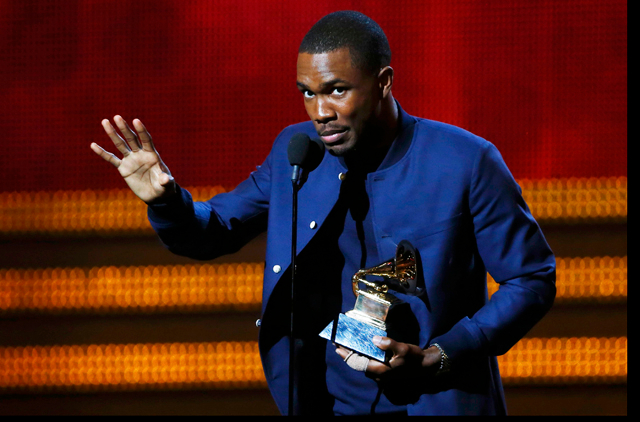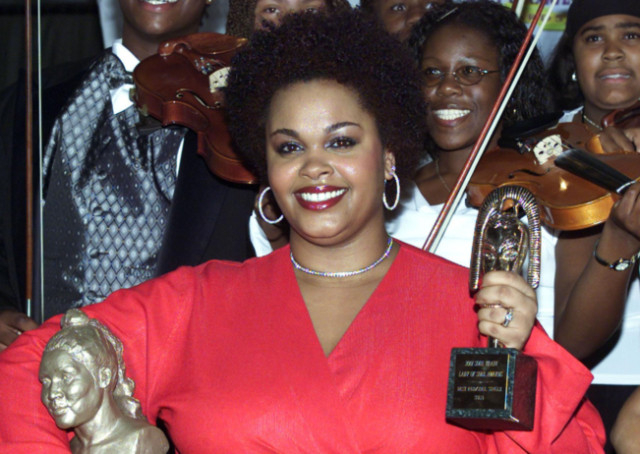
Five minutes into Justin Timberlake’s new jam “Spaceship Coupe,” something strange and surprising happens. The song keeps going.
Though the singer has already run through the requisite verses, choruses and instrumental breaks, Timberlake and his producers keep flying, and pass through one of the traditional frontiers of popular music. Beyond five minutes, the theory goes, lay pomposity, tedium and unmarketability. A pop song should present itself, explain itself, repeat it just in case you missed the point, surprise you for a second, then get out. Everything else — OK, except maybe a wicked guitar solo or funky organ run — is extraneous. But some of the most compelling artists in the ‘10s are in an expansive mode. Most of the songs on Timberlake’s chart-topping new album, “The 20/20 Experience,” are longer than seven minutes. One of the most discussed songs of last year, Frank Ocean’s “Pyramids,” clocks in at nearly 10 minutes. Jill Scott’s “Le Boom Vent Suite” takes a similar time to explain the conflicting emotions of a love affair. Acclaimed R&B sensualist the Weeknd’s breakout songs too are more like suites.
Though the songs may go long, within them are miniatures that seek to hook a generation accustomed to juggling texts, tweets, IMs, YouTube clips and viral hits.
In an era when fans are just as likely to spend $1.29 downloading a single song as $10.99 for the entire album, there is an appetite for work that, while catchy and melodic, is also longer and more complex. In place of the concept album these are “concept songs.” Songwriters and producers are offering constantly shifting structures to combat the relentless demands on eyes and ears. If it’s true that the mind tends to wander while listening to repetitive music, then by shifting tempos, adding hooks and bridges, offering a little sing-along break, producers might be able to jar the brain back to the music at hand. Enabled by software that allows chunks of a track to be moved on a whim, the new works are created on computer hard drives.
Timberlake’s popular new track “Mirrors” is a majestic — if lyrically simplistic — construct. Just as the song seems to be winding down after five minutes, the track juts off in a fresh direction, skidding into chants, robotic warbles, a bare-bones beat and a hint of tinkly piano. The song never returns to the original melody for resolution. Somewhere it’s probably still playing. “That’s the remix part of the song,” said Jerome “J-Roc” Harmon, who worked with Timberlake and executive producer Tim “Timbaland” Mosley on “The 20/20 Experience,” which sold almost 1 million copies in its first week. Harmon says that the extended song lengths add heft. “Conversation pieces — that’s what people want,” he says. “They want to talk about it.”
Harmon, who has co-produced for Jay-Z, Missy Elliott, Shakira and Chris Cornell, added: “If you were to listen to today’s formats, especially in the hip-hop/pop category, every song sounds like the same song, like it’s all one big remix. Artists are picking the same producers, and they program songs in the same tempo, and a lot of times in the same key. It’s supposed to grab your attention, but it’s doing the total opposite.” That’s what he and Mosley are trying to counter with longer or more rhythmically varied tracks.
Historically, pop music has trended longer as space limitations have diminished. Over the last seven decades, the average duration of a charting pop song has extended by more than a minute-and-a-half, from 2 minutes 30 seconds in the 1950s to 4:14 in the 2010s, according to the Billboard Experiment. Great leaps forward such as Bob Dylan’s “Like a Rolling Stone,” the Beatles’ “Hey Jude,” Donna Summer’s “I Feel Love,” Grandmaster Flash and the Furious Five’s “The Message” and Kanye West’s “My Beautiful Dark Twisted Fantasy” (on which “Runaway” tops nine minutes) have offered gravitas, while advancing an argument.
Technology, as always, plays a role. Due in part to the limitations of 78 rpm records, which were best with a mere three minutes of sound, the structure and length of songs became standard. In the same way, the more durable 45s thrived on three-minute masterpieces and set a template for commercial radio airplay that holds true today: A lot of short songs are better than a few long ones. Thus, record labels continue to offer edited “radio versions” of extended songs for airplay. Ocean’s “Pyramids,” for example, aired with a version at half its album length. Gone are the days when FM rock radio would play multithematic opuses by classical-inspired prog rock artists such as Yes and Queen, who took advantage of the LP’s 22-minute side to craft big works with big ideas. In the ‘90s hour-long cassette tapes led to the mix-tape movement. Compact discs stored about 75 minutes, which gave rise to an era of overly padded 18-song albums offering the illusion of value in an era of overpriced plastic. Today, computer storage capacity allows for songs extending to hours and days. One particular song has been going nonstop since Jan. 1, 2000.
Called “Longplayer,” the computer-produced composition was created by Jem Finer, a founding member of Irish folk band the Pogues, to play for 1,000 years. With these progressions have arrived new structural variations. The music of disco, dance pop, Latin freestyle and house music, all built for the dance floor, has filled 12-inch singles with remixed repetition since the ‘70s, and short slices of those styles — the quick breakbeat, for example, or the four-bar scratch — have sneaked into pop songs.
For example, when Taylor Swift’s “I Knew You Were Trouble” drives into its chorus’ climactic, warbling bass-drop, she and her producers were picking up on a sound that had evolved through countless seven-minute tracks. She pared it down to eight bars, but it’s still loaded with dance floor context. In 12 epic minutes, rapper Kendrick Lamar’s “Sing About Me, I’m Dying of Thirst” addresses death through the voices of three narrators, changes gears and looks at the same scenario omnisciently and ends with a prayer.
The video version of K-pop superstars Girls’ Generation’s “I Got a Boy” runs just over five minutes but features nine varied themes that roll into one big hit by the end. Even a smaller song like Fun.’s “We Are Young,” at just over four minutes, moves from single- to double-time to half-time over the course of the first minute. It’s easy to hum any one of the song’s mini-movements. Yes, the concise pop song remains a powerhouse — Carly Rae Jepsen’s “Call Me Maybe” runs an indestructible 3:14. But the bravest and most creative artists are cramming a lot of variety into their jams, and pop music is the richer for it.














